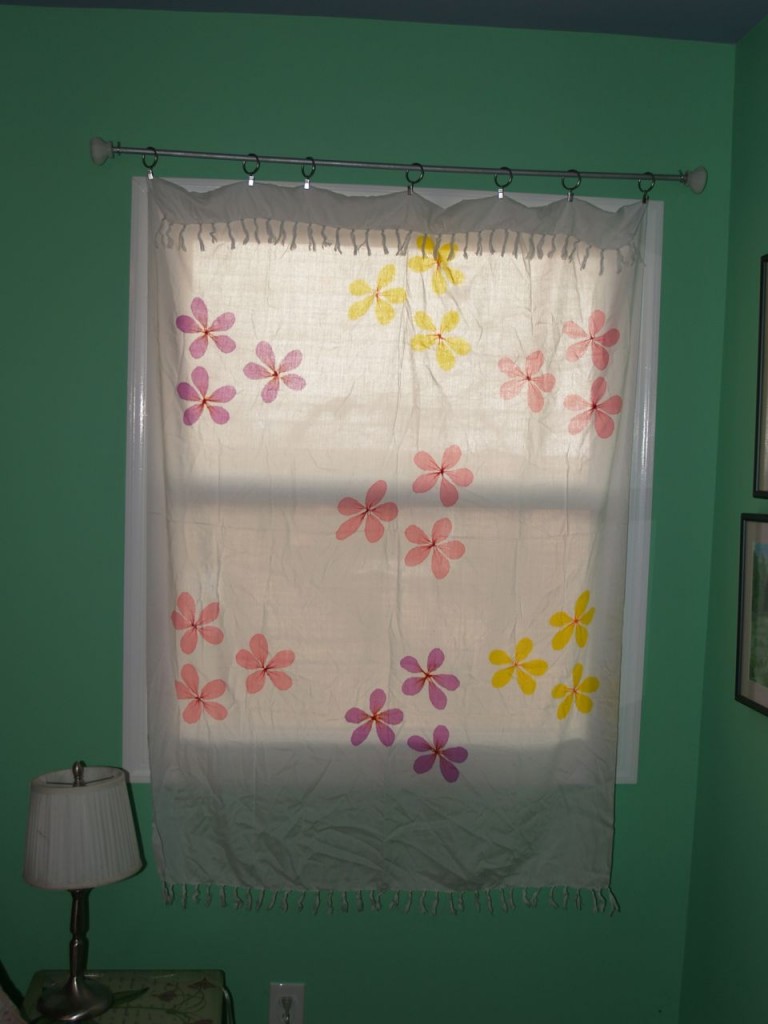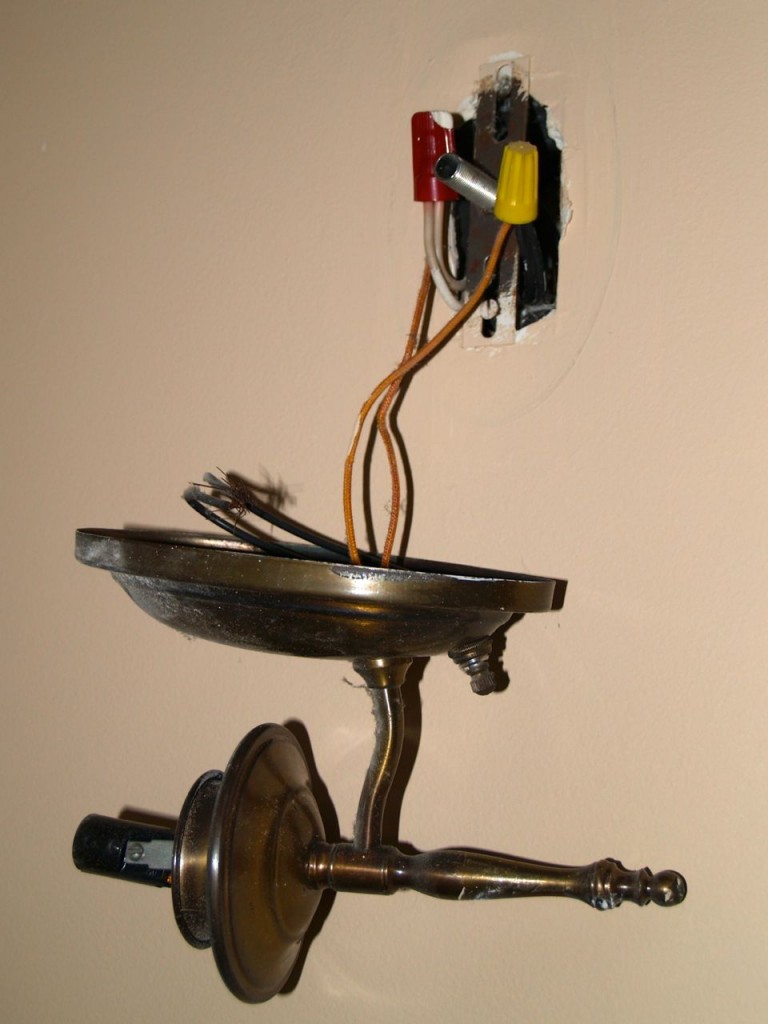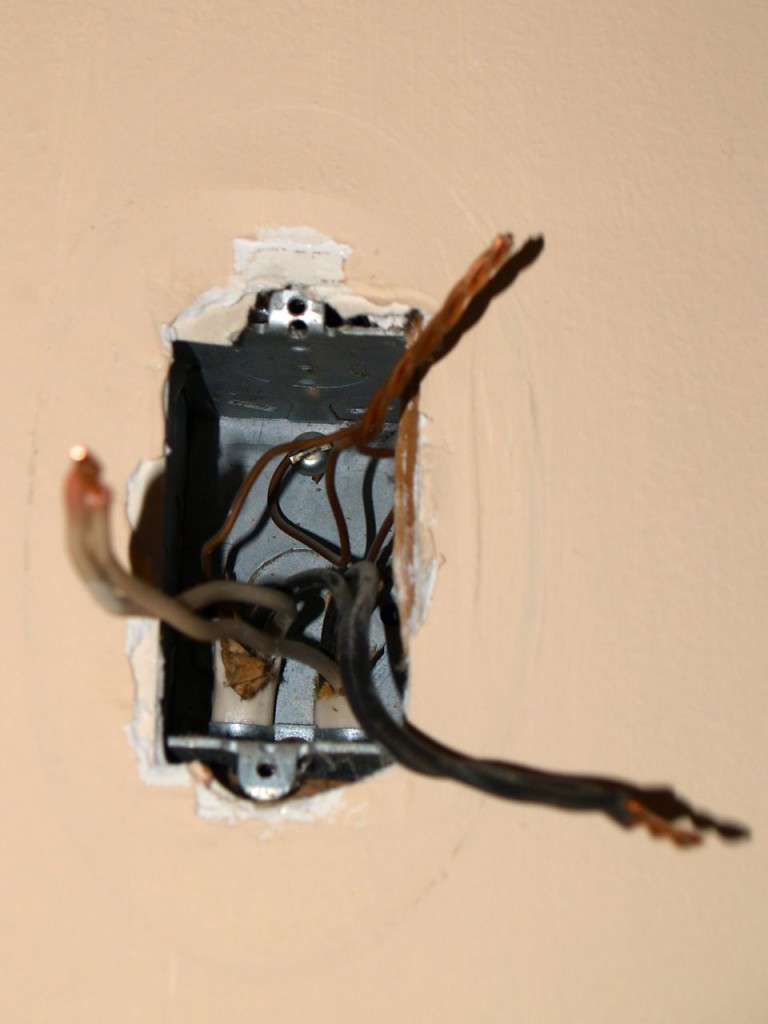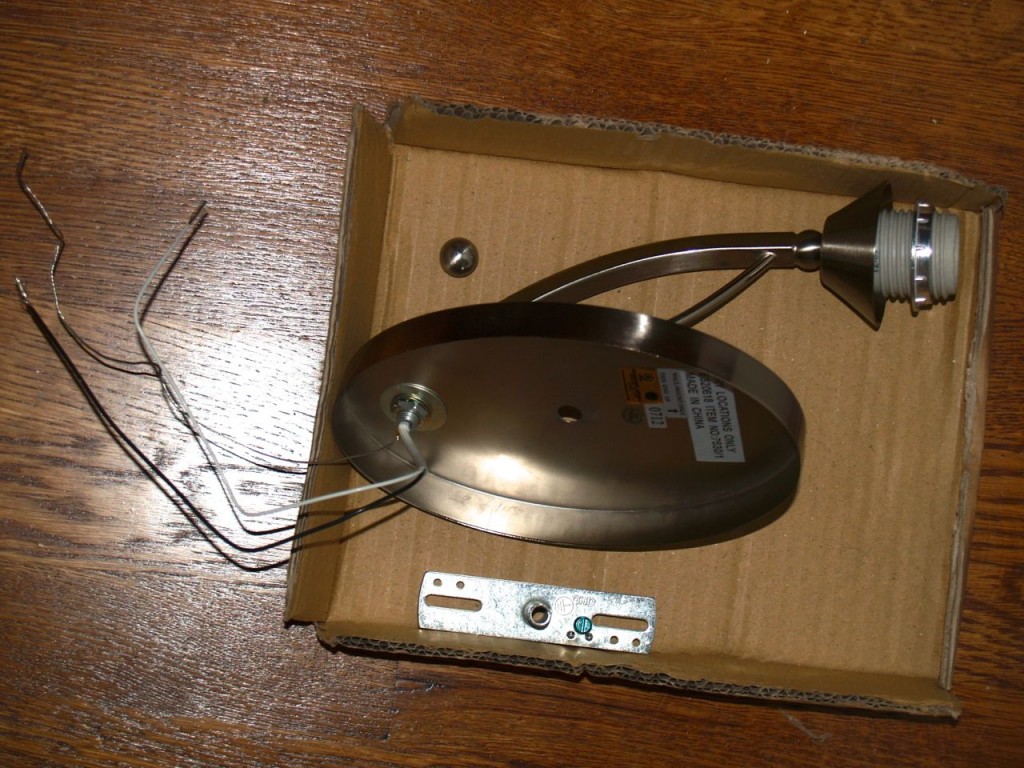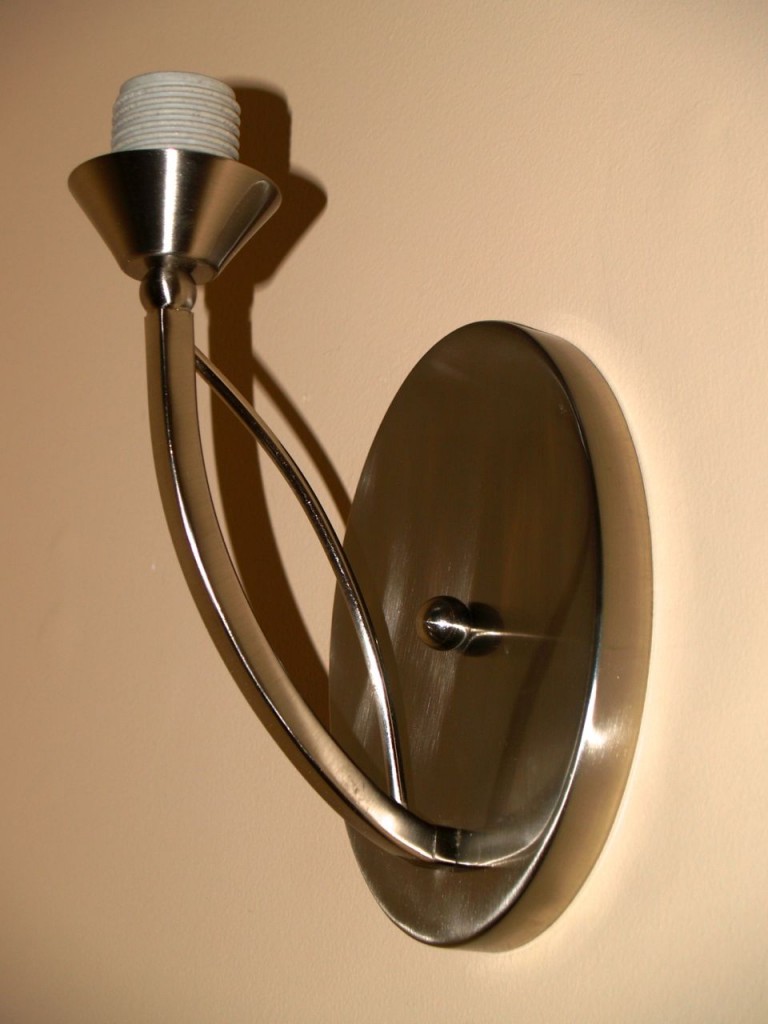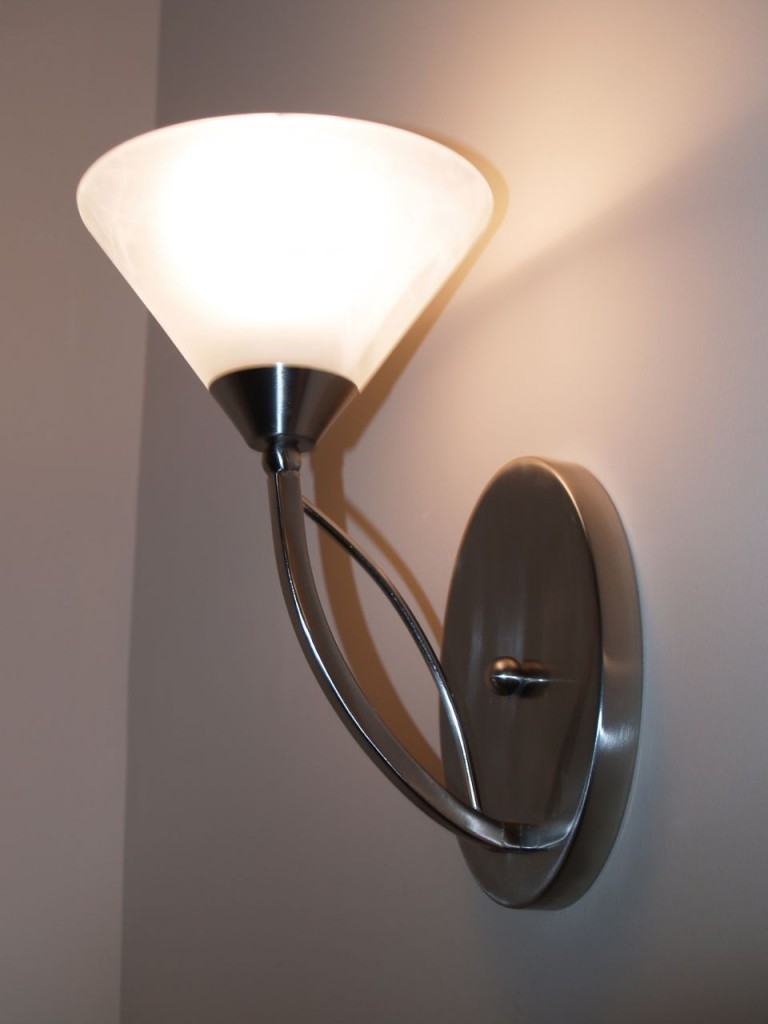I was lucky enough to have a flight to Las Vegas that flew directly over the Grand Canyon. I don’t know how common this flight path is, but in any event, I had my camera with me and managed to get a few really good photos. From above, you really realize just how big the Grand Canyon is.
Author Archives: geek
Las Vegas Lights
Las Vegas is known for many things, and one of those things are its lights on the strip. While visiting Las Vegas, I set up my camera on my tripod to capture a few photos of the lights.
The pedestrian overpass north of the Venetian, looking south

The Flamingo’s colorful sign
The overpass near the Flamingo looking south on the Strip. The Flamingo sign and hotel is reflecting off the transparent barrier.
The overpass near the Flamingo looking west towards the Bellagio. The fountains of the Bellagio can be seen.
The Bellagio fountains
Aboard the Amtrak Carolinian
Recently I took Amtrak Carolinian between Washington, DC and Raleigh, NC. I love traveling by train. It is relaxing and is a wonderful way to see the country. The Carolinian passes over several gorgeous bodies of water as well as through some lovely countryside. Below are some photos of my journey. They are in order from south to north.
The Roanoke River near Weldon, NC.
Cotton fields near Emporia, VA
The James River in Richmond, VA
The Rappahannock River in Fredericksburg, VA
The Potomac River near Quantico, VA
The Occoquan River in Woodbridge, VA
The Potomac River between Arlington, VA and Washington, DC
A Curtain Rod from Door Knobs and a Wooden Dowel
Here are my starting materials: two antique milk glass door knobs, a wooden dowel, two wall hooks, and silver paint. Not pictured are store bought curtain clip rings, Liquid Nails, and the curtain, which is actually a tablecloth.
I painted the dowel. Then I put the curtain rings on the dowel. I used Liquid Nails to glue the dowel into the two antique milkglass doorknobs, which conveniently I bought without the rods that attach them to the door mechanism. The only problem with the way I created this curtain rod is that the curtain rings are now permanently on the rod, unless I want to break the dowel to remove them.
After everything had dried and cured, I attached the rod to the wall using the wall hooks which simply screw into the drywall and studs. [Wooden dowels come in multiple diameters, so I picked the diameter that best fit into the door knobs. Similarly, I bought wall hooks that best fit snugly around the dowel.]
For the curtain, I used a hand painted piece of fabric that my sister gave me, which I think is from Bali. I am pretty sure it is supposed to be a tablecloth, but it fit my window perfectly, and it was too pretty to never have on display. Below is the finished window treatment that is pretty and VERY unique.
My Photographic Obsession with Philadelphia’s Comcast Center
I’m visiting Philadelphia for the week. Unfortunately it’s for work, and I have very little time to sightsee. I definitely plan to return someday as a tourist. In the meantime, I have developed a bit of an obsession with the Comcast Center here. It’s a beautiful, tall skyscraper seen below.
It’s top part has a unique cutout on the front, and the side has different glass on top which helps to call attention to the sloping sides.
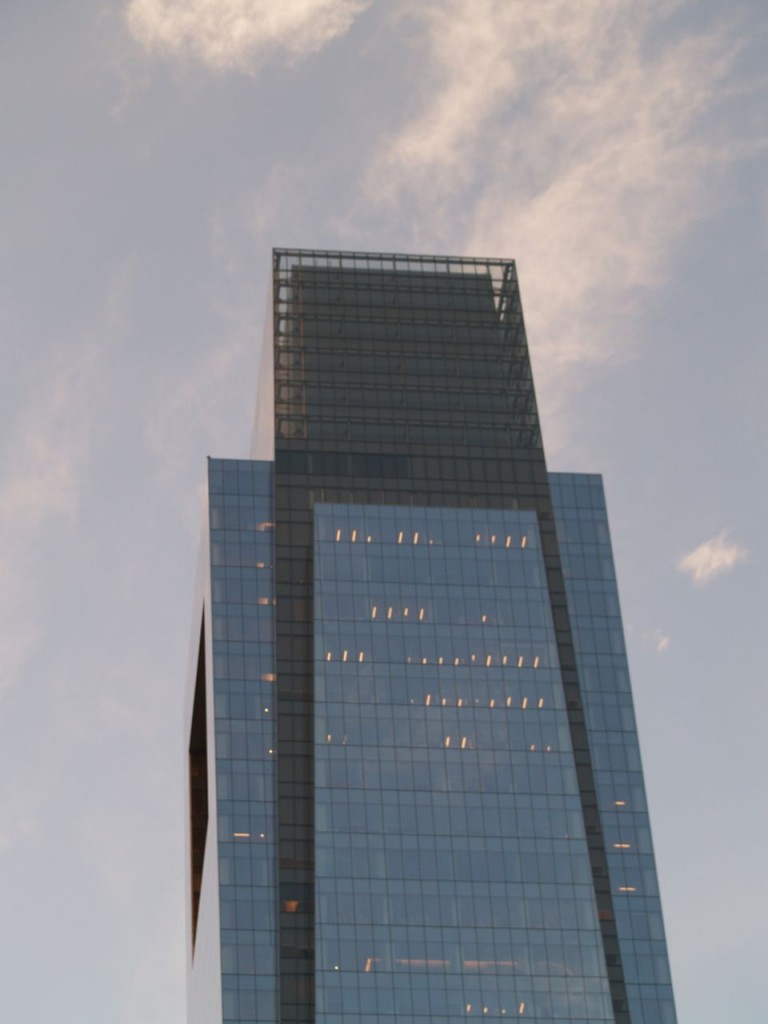
 Its lower section has an interesting set of “boxes” in front of it.
Its lower section has an interesting set of “boxes” in front of it.
Mostly, I think part of it’s beauty is its simplicity which allows it to reflect its surroundings in beautiful ways. It becomes a near perfect mirror in the correct light. It also blends into the sky in gorgeous ways.
Then it reflects the clouds and sunset.
And possibly best of all, is the way it reflects nearby buildings, including Three Logan Square, photographed below.
Also here it reflects One Liberty Square. It kind of looks like One Liberty Square is at the end of this street, but it’s the reflection.
So, yes, I’m a bit obsessed, photographically speaking, with this building. I probably would have taken more photographs if I had not had to be in meetings all week.
It Can Be Lonely Being a Female Engineer
Today is my mom’s birthday, so I’ve thought about her many times today and how she has influenced me in so many ways. The way she has influenced me has been in stark contrast to different news stories that came out recently that have distressed me a great deal. First, Iran has banned women from almost 80 different college majors. This does not affect me at all, but this sexism is disturbing. Many of the majors women are being banned from are science and engineering majors. Second, a Yale study recently concluded that women are still biased against in universities in science majors. This Yale study is just astounding and to me really depressing. It is particularly depressing to me since I am scientist and engineer, and I realize just how far we have to go until women have equal footing with men in the science, technology, engineering, and math (STEM) fields.
When my mom was little, she had trouble in her math classes. When she would tell her mom this, my grandmother would tell her “Don’t worry honey, girls aren’t supposed to understand math.” At some point, she took this to heart and stopped trying to understand math. My mom is not stupid, and she doesn’t give herself enough credit for all the things she does and understands. I don’t think she has full confidence in her abilities though. My mom told me about what her mom told her, several times when I was older. She told me that when she had my sister and I, she was determined that we would never be told that there was something we could not do. She always told us that we could do anything to which we set our mind. Somethings might require more work than others, but we just had to work harder. My sister struggled with math at times, so she went to a math tutor. I can remember when I was in junior high, and at one point had trouble with math. Then at some point, something clicked, and I started to excel in it again, as I had when I was younger. It should be noted that I have always had a skill at math. My grandmother, the same one who told my mom that girls weren’t supposed to be able to do math, used to tell me a story about when I was little. I had just started to learn addition in school, and when my grandmother was driving me somewhere, I would ask her to give me numbers to add. I must have really liked math already, and I wanted to practice. She would give me numbers like 5 and 3. I would reply “No Maw Maw, give me big numbers.” I would demand she give me three digit numbers to add. After this happened once, she later my mom there was something wrong with me. I guess she just couldn’t understand a little girl liking and being that good at math. [As a side note, I believe at that point, I was already displaying the signs that I would grow up to be an engineer. I was good at math, and I was already a horrible speller. Parents, if you notice these traits in your child, they may be destined to be an engineer. Please take precautions.] I don’t mean to describe my maternal grandmother badly. She was a wonderful grandmother, and she was always supportive and proud of me. She was just from a different era. I credit my mom with being determined to break gender biases and wanting her daughters to have equal opportunities as any male. I credit my mom and her telling me I could be anything I set my mind to, with my becoming an engineer.
I am not sure if I have been biased against as a female engineer, but I have definitely felt like an oddball simply for being a female. As an undergraduate, I went to a small technical college whose student population was and still is only about 20-25% female. My undergraduate department of chemical engineering had one female professor, and I never actually had her as a professor. As I think back, I can’t even remember that many female professors at all. I think the math department had possibly the best ratio, close to 50%. I think I had one female professor in the engineering department, and she was as adjunct professor. Of the geology, physics, and chemistry classes I took, I can’t actually recall one female professor that I had, but I think each of these departments had a couple. I graduated from college in 1995. I am not ancient, and this was not that long ago. The civil engineering department of the university where I got my Master’s degree was similar in terms of student and professor female ratios. My advisor was a women, but she was one of the few females in the department. At some point back in college, I just got used to this type of ratio.
In my first job as an environmental engineer at a consulting firm, the company was dominated by men. There were female engineers, but not that many. I worked in a small branch office where initially I was the only female engineer. I can remember being in meetings with clients from a municipality along with coworkers from my firm, and I was the only female in the room. Later I worked for a state agency where once again, most of the scientists and engineers were men. When I went back to graduate school a second time to get my Ph.D., like with my Master’s, I had a female advisor for my Ph.D. The fact that a women was my advisor had nothing to do with her gender but that she studied a topic that I wanted to study. The department I was in actually had a number of female professors, but it was still dominated by males. I don’t know the ratio for the students, but it was pretty good. I think one reason it had plenty of female students is that it was environmental science and engineering department. Environmental engineering seems to have a greater number of female engineers than other other engineering fields. The hypothesis many people, including myself, have is that part of environmental engineering is caring for the Earth. Perhaps that “caring for the Earth” aspect attracts women more than other engineering fields.
In my career, I can’t remember feeling biased against as a female. It is possible I was, but like other aspects of my life, when I have felt something like this, I would just plow right through it. I can remember when I did field work such as working with drillers, I would sometimes force an air of confidence on myself that I didn’t really feel to get through the job. However just as importantly, I never felt particularly encouraged as a female engineer. I have no wish for special treatment or recognition just because I am a female, but when the only females I sometimes worked with or interacted with on the job were the secretaries, it would have been nice to have a female mentor to talk to just when I was tired of all the testosterone. I feel very fortune where I work now because there is an extremely good ratio of women to men in the science and engineering positions. My boss and her boss are both women. I am no longer lonesome being a female engineer.
I don’t know that STEM fields will ever reach a point where there is an equal number of women as men working in the fields. I get the impression that certain science fields are doing better than others at attracting women. The engineering fields seem to be eternally struggling to attract females. I don’t know what the solution is, but I do think it is very important to have females as well males in the STEM fields. Having females and minorities in STEM fields brings diversity to solving problems and even recognizing problems that can be vitally important. We also must make sure women are given equal opportunities. Even if for whatever reason females just don’t like STEM fields as much as males, we must make sure that females who do like STEM fields are encouraged to enter and stay in those fields. [Helping women to stay in STEM fields during their careers is to a certain extent a whole other issue.] We must make sure little girls are told they can be anything they want to be. We must make sure girls and boys are not told that there are girl and boy subjects. If we can’t even accomplish that, then we have no hope of equal opportunities.
Empathy for Technophobes
I was in a discussion recently about bovine spongiform encephalopathy (BSE) otherwise known as mad cow disease. The important background of it and why I am mentioning it, is that dairy cows need protein supplements because of how much milk they produce. In North America, the protein supplements were mainly in the form of soy, but in the United Kingdom, the supplements came mainly from rendered animal parts. These animal parts included other cows. I can remember when BSE first became a huge news item, and the practice of feeding cattle rendered animal parts came to light, I was disgusted like I imagine many people were. Part of my disgust was my questioning why would you take a herbivore, and not only turn it into a carnivore, but also a cannibal? Leaving aside the point that BSE showed that this practice had serious risks, there is a more basic question I have to ask myself, which is protein is protein, so does it matter where it came from? In this case, of course, the answer is yes. On a molecular level, amino acids like lysine and tryptophan, are the same no matter where they come from. However, the proteins and other compounds in soy differ quite a bit from the proteins and other compounds in rendered animal parts. Also, in the case of BSE, it is the shape of the proteins in animal parts that was really important. Thus in this case, it really does matter where the protein is coming from.
The turning a cow into a cannibal is still a bit of a different issue. The idea in general just seems wrong and repulsive to me. It is not natural. I think that reaction I have is somewhat common, and it has implications for how people react to certain technology. Humans are naturally repulsed and scared of certain things, and this has for the most part served us well through history. Humans in general, are repulsed by human excrement. We all urinate and defecate, but once we do, we all want the urine and feces to go away, never to be seen again. This is not a bad reaction in that, feces can have multitudes of infectious agents in it, so having it go away is a good thing. I am speaking personally to a only certain extent though. I have worked in wastewater treatment design, I have sampled at a wastewater treatment plant, and I spent several years collecting and analyzing other people’s urine for my dissertation research. I am kind of fascinated by human excrement and the information it can provide about the health of an individual. That being said, I would never touch it with my bare hands.
Humans’ natural repulsion to their own excrement causes an interesting reaction to its treatment. In urban and suburban areas, wastewater is collected, treated, and then normally discharged to some body of water such as a river, lake, or the sea. What many people don’t seem to realize, is that if the wastewater is discharged to a river or lake, then there is a very good chance, it will flow some distance and then be collected and pumped to a water treatment plant where it will then be treated and become the water supply for some other municipality. Due to the scarcity of water in many areas, some municipalities are starting to take some of their wastewater effluent and reuse it for purposes where potable water (drinking water quality) is not needed, like watering golf courses. There are normally some differences in the treatment of water to be reused than water to be discharged, but not a great deal. Once water is discharged to a river or lake, the only real, further treatment that occurs to it is dilution. Depending on the water to which it is discharged, it can be diluted by a factor as low as three (and possibly lower in a drought) or as high as 1000. A certain amount of biodegradation and other treatment may occur after discharge, but sometimes the water source into which it is discharged, can be polluted in its own way. However, the wastewater once put into a water source, does not become magically clean. Also, the amount the wastewater is treated before being discharged is based on regulations and also money and design. Regulations require it to be cleaned to a certain level. The technology exists to clean wastewater enough to turn it back into drinking water. It is not that difficult. It just requires the plant to be designed to do that, and extra costs, both in capital costs and operating costs. Years ago, a colleague once told me of a wastewater treatment plant that was designed to do just that. The wastewater was cleaned enough to meet drinking water standards. It was designed for a municipality with constant water shortages and thus needed to recycle water. However, the municipality required the water to discharge into a lake before it was then used as drinking water. By requiring this, the water actually became dirtier and picked up contaminants while in this lake. The municipality required this purely for the ick factor. They did not think the public would drink water that came straight from a wastewater treatment plant. The municipality was worried people would have the reaction of being disgusted to drink treated wastewater. This is a somewhat normal and understandable reaction, but it is completely ignorant of the treatment process nonetheless. It should be noted that even highly educated people suffer from the ick factor. Mary Roach in her wonderful book “Packing for Mars” describe how astronauts are not completely enthusiastic about recycling urine to drink.
There is a good chance that even if you educate people about the treatment process, some people would still not be able to get over the ick factor. I, at least, can’t really blame them. It really is natural to be repulsed. I’ve seen discussions among scientists that I am afraid sometimes almost borders on contempt for the ignorance of people who are scared of certain technologies. If people were educated about certain technologies, many would accept the technologies, but many still wouldn’t. Genetically modified organisms (GMOs) are an example of this. I fully admit I have a problem with some GMOs but not all. I have a serious issue with plants that have been modified to produce Bt toxin, but my issue with this is not about the plants ability to produce the toxin, but the effect it might have on organic plants, which many times are treated with Bt toxin to kill insects. I like organic foods for a multitude of reasons that I won’t go into here, but I don’t think there has been enough research or even concern about how GM plants that produce Bt toxin might have on organic plants. I also have an issue with GM plants that have been modified to be resistant to herbicides, but again I don’t actually have an issue with the actual genetic modification. I have a problem with the fact that this allows greater use of herbicides, and the effect this can have on the ecosystem and also the effect this can have on the workers who work with the herbicide. Conversely, I don’t like certain GM animals such as GloFish, and I would put this into the category of just because we can do something, doesn’t mean we should. Perhaps it is ignorance and the ick factor. I’m not scared of them. I just think sometimes humans do things that perhaps we shouldn’t. Sometimes, it really isn’t nice to play with Mother Nature.
I have discussed my issues with GMOs to a certain extent with a person I know who works on GMOs. She is constantly fighting ignorance and fear about GM foods. We have discussed a little the issue of labeling GM foods. I support the labeling of GM foods, and she has stated it is not that simple. I don’t have all the facts, but I think part of this has to do as to where “traditional” plant hybridization and breeding end and where does genetic modification start. The problem is that when GM foods are not labeled, it gives people who don’t like GM foods more ammunition to fight GM foods because they can say the public is being lied to and information withheld. I have heard the argument that if foods that include GMOs are labeled as such, then people won’t buy them out of ignorance. I don’t think this is a valid argument. That is a consumer’s right. Some people who oppose GMOs when educated about what GMOs are and are not, will probably start to accept them, and other will never accept them. However people must be free to make their own choices even if out of ignorance and fear. [I am leaving aside the issue of ignorance and fear leading to people making decisions that not only affect themselves but others, which is a whole other issue.] Further, taking the attitude that people don’t need to know certain things because they wouldn’t understand, is arrogant, and educated people must stop themselves from becoming arrogant. Educated people need to fight harder to educate others.
Nuclear power is another example of technology of which many people are scared. A large problem with nuclear power of course, is that it is a relatively safe technology, but if something goes wrong, it can really go wrong. Nuclear accidents are thankfully relatively rare, but they have the potential to affect a huge number of people as seen with the Chernobyl and Fukushima disasters. Considering how long nuclear power has been around, I think it is unlikely that some people will ever accept nuclear power even if fully educated about it. Nuclear power may also be one of the technologies where people think we are doing something we should not be, as in it it not natural. I am not sure, but I also think nuclear power suffers from an engineering problem. From my limited knowledge of both Chernobyl and Fukushima, both had design flaws, in that possible, known “what ifs” were not properly addressed in the design and construction. I learned recently of new nuclear power designs that would not have the risks associated with current nuclear power plants, like meltdowns. I am very excited to see if these designs will discussed and used in the coming years, but I worry that bad memories of old technologies will prevent people from accepting these new technologies.
People have a very long memory when new technology goes wrong. Scientists and engineers are really good about learning from when things go wrong. However, if when things go wrong, people, the environment, property, or something else is harmed, then not only do scientists and engineers have to learn how to improve the technology, but we also have to regain people’s trust. That can be an even more difficult process. Some people fear technology that they don’t understand. Also, when the previous technology had problems, and people don’t understand what has changed between technologies, it is going to very difficult for them to accept the newer technology. Then again, some people fear technology that they do understand. Perhaps the fear is due to the ick factor or the your-playing-God factor. I am empathize with this fear. Education can help to alleviate fear but not always. Sometimes fearing, distrusting, or not accepting a technology is not just an education issue. Sometimes it is a deep-seated, human instinct. Perhaps this is both good and bad. I think those of us who work with and on technology would be best served to remember that.
Changing a Lighting Fixture
I will do all sorts of things around the house, but I admit that doing electrical work sometimes scares me. I think it is the issue that if you do it wrong, you could kill yourself or catch your house on fire, but no pressure! Really most of the work is not that difficult. I still leave the big stuff to professionals, but little tasks like changing a lighting fixture can be done easily by yourself. First thing you need to know is turn off the fixture by the breaker. Not electrocuting yourself is a good thing. So here is the light fixture I removed, and now you understand why I replaced it.
Like a lot of fixtures, this one was attached to wall via a large screw. Remove the nut in the middle of the sconce, and the sconce can be removed.
Then unscrew the wire nuts and remove the old sconce’s wires, and the sconce can be removed from the wall. Then remove the old mounting bar from the outlet box by the removing the screws that attach it to the outlet box.
Here is the new fixture. Note that it has a black wire, a white wire, and a bare grounding wire. It came with a mounting bar that has a green screw on it. That is the grounding screw.
Install the new mounting bar. The fixture grounding wire needs to be attached to the outlet’s grounding wire and also the mounting bar’s grounding screw. This fixture’s instructions said to attach the outlet’s grounding wire to the grounding screw, then attach the fixture’s grounding wire to the outlet’s grounding wire. Because the grounding wire in this outlet box was already wrapped around a screw in the back of the box, there was not enough wire to do this. So I wrapped the fixture’s grounding wire around the mounting bar’s grounding screw, then wrapped the fixture’s grounding wire to the outlet’s grounding wire and secured with a wire nut. Then I attached the fixture’s white wire to the outlet’s white wire, and black to black, and secured with wire nuts.
Here is an up close view of the wiring attached to the grounding screw.
I then shoved all the wires back into the outlet box.
The sconce is then attached to the wall via the large screw in the middle of the mounting bracket and secured with the decorative nut.
The glass shade is then attached, and in the case of this fixture, secured with a metal ring that came with the fixture. Add a light bulb, and ta-da, and new working, beautiful light fixture.
Dampening Citizen Involvement
I moved to my new house and metro area about a year and a half ago. I paid a premium on my house because it is in a municipality that is very close to the main downtown area and is a downtown area onto itself. My house is a block from a street, which I will call CP, that is a major bus corridor. A bus comes by my stop on CP every few minutes to various subway stations. I can take the bus home until rather late in the evenings and really late on weekends. I can take the bus to the grocery and as I indicated in a previous post, I can take my cat to the vet on it. I take public transportation to church on Sundays. I absolutely love it. I can go weeks without using my car. I know many people who can’t bear to not use their car, but I’m not one of them. Yes, I have to wait for a bus, but I get exercise walking around, and I don’t have to deal with the absolutely insane traffic in the area.
For the most part I love my new area and specifically my municipality. I think for the most part, the municipality is designed to support those of us who like to walk and bike. I have had one annoyance for a while that has to do with the above mentioned street CP. When crossing CP at most, if not all, intersections, you have to press one of those buttons to get the pedestrian walk symbol and countdown. However you only have to do this when actually crossing CP and thus walking in a north or south direction. If you are crossing one of streets that intersect CP, thus you are walking parallel to CP or in a east or west direction, then you automatically get a pedestrian walk symbol and countdown when it is safe. I have yet to figure out a logical reason for this. I have to cross CP every weekday morning to get to my bus stop to go to work. I also cross CP and its intersecting streets at various intersections at other times. As far as I have observed, just as many people cross CP as cross its intersecting streets. Because of the way the bus stops are located, essentially diagonally across the intersections, you would expect people to be going in all directions. Obviously I have thought about this for a while, and I would like to get it changed so that when crossing CP, the pedestrian walk symbol automatically comes on. Too many times, I have had either had to wait out an entire traffic light cycle because I wasn’t sure if I had enough time to cross, or I have had to gamble and quickly get across the intersection watching the traffic light the whole time to see if I need to run. To me, this is a safety issue. Too many people cross CP to catch a bus, and I would bet that there are constantly people crossing when it is not safe because they don’t realize how little time is left.
Thus, I am determined to see if I can get things changed. I have no delusions that I could just call someone up at the municipality and get things changed in a couple of weeks. However, things don’t get changed if no one tries. I have been searching for a while with whom I need to talk. Last week I met someone who gave me the name of a municipality staff person who might be able to help. I also found out that there is a citizen pedestrian advisory board. I decided the best place to start was with this board.
At this point, I should explain that before I moved to this new metro area, I lived in a small college town. The college being where I got my Ph.D. I love this little town, and during my seven years there, I got involved in numerous ways. One way I got involved was by being a member of the town pedestrian and bicycle advisory board for five years. Being a member of this board is an unpaid, partially thankless job, that many people would hate, but that I liked. Members are appointed by the town council and are citizens of the town and surrounding areas. Like other advisory boards, we reviewed special use permit applications for things under our purview. Staff would have already reviewed the applications, but we looked at them for the standpoint of, for example, they have the required number of bicycle parking spots but are they in a safe and useful location. We did other things and worked with other boards and departments, but the goal was to help give input as active cyclists and pedestrians to improve our town. Our meetings were always open, and on a regular basis, citizens would come to our meetings to complain about something or seek our support on something else. We couldn’t always help, but we always listened and tried our best to see what could be done. Many times things would come down to limited funds. Many times things would come down to reality or legalities.
In my old town, getting the advisory board’s support added more weight to its importance with the staff and town council. So when I found out that my new municipality has a citizen pedestrian advisory board, I thought this was the best place to start. They meet once a month, and there was one tonight. It started at 7, so I went straight from work. I was hoping to say my peace, perhaps stay for a little bit to see how things worked, then catch a bus home and get dinner. Oh the best laid plans of mice and men. . . I made some assumptions that the meeting would be at least partially like my old town’s. The town was a municipality of less than 60,000 people, and there were nine members of the advisory board. The first thing on our agendas was to welcome new people and ask if there was a specific reason they were there. They were of course welcome always, but most of the time people come to the meetings for a specific reason. My new municipality has a population close to 220,000. I figured the board might be larger, and the meetings have a larger attendance. Then, I got to the meeting, and there are six other people there. One of those people was actually presenting something to the board and wasn’t a member. Another person walked in late, and I never found out who he was. At the beginning of the meeting everyone introduced themselves, I said I had lived here for a year and a half, and I am one of those annoying citizens with a demand (or something to that effect). I said it with a laugh and a smile, and everyone took it as a joke. The staff person then introduced himself as a staff person who deals with annoying, demanding citizens. The meeting started with a person presenting information about an ongoing project. He then left, and the chair immediately brought up another item on the agenda. They discussed several items for quite a while, and most of the time I didn’t understand what they were talking about as they were issues with which I was not familiar. At no point, did they ever ask me why I was there. They never asked me what my demand was that I had joked about when I introduced myself. It just didn’t seem to occur to them. I have to wonder if they ever get members of the public just show up at their meetings. They were nice to me, but evidently they thought I was just there to watch them. I have no idea.
I finally had to leave the meeting at 8:40. I needed to catch a bus that only came every half hour. I was really hungry, and I had no idea if I would ever be allowed to speak about why I was there. When I got up, the chair thanked me for coming. I can’t remember exactly what he said, but I finally asked when do they allow for items not on the agenda for people like me. Again, I don’t remember exactly what he said, but I got the impression that 1. they don’t get many people like me wanting to discuss something not on their agenda and 2. if someone like me shows up, they are just supposed to say their peace when they get there. I have no idea if that is really what they expect. Their meetings are really informal, and perhaps they don’t actually vote on anything. Perhaps because on my old town’s board, we did vote on things, we had an agenda and followed, or tried to follow, Robert’s Rules. I was never given an agenda for this meeting, so I have no idea when I would have had a chance to talk, or when this meeting would end.
Once I finally had the board’s attention, as I was leaving, I stated in a vey polite manner that I had served on my former town’s bike and pedestrian advisory board for five years, and the first item on the agenda was always people who randomly showed up. I said that since they were a citizen advisory board, I would assume they want citizen input. If they want a meeting conducive to welcoming citizen input, then when someone new shows up, they need to ask them if there is a specific reason why they are there and give them time to speak. Perhaps other people would just interrupt, but I am not like that. You can’t expect someone to sit through an entire meeting waiting for a chance to speak, especially if that person is never given an agenda and never informed when they can speak. All of them seemed quite surprised and perhaps to an extent concerned by my comments. I think they would have welcomed my concerns, it just didn’t occur to them that they should ask me for them. I am quite surprised by all this. This is quite a large municipality, and I can’t believe no one shows up with a concern. Then again, it took me forever to find out about this board, and I was actively searching. Perhaps barely anyone else knows they exist. Once I shared my annoyance and disappointment with the board, they then seemed to want to know what my concern was. I had previously given the chair my e-mail address, so he asked if he could email me. I said of course, I just had to leave to catch a bus.
So now I am annoyed. I wasted two hours of my life and got nothing accomplished. Not only did I not get to talk to the board or anyone else about my concern with pedestrian walk lights, I am now annoyed with the way this particular board operates. I want to know if other citizen boards work like this. How do they expect to get input from the public if they don’t make their meetings conducive to receive input? How are concerned citizens even supposed to find these boards when they are not advertised all that well. So now, I have a new quest. Besides getting pedestrian lights changed, I now want to change how this board operates. I want my municipality to advertise these citizen boards better. So who do I have to talk to about this?
Thus my new municipality, I am putting you on notice. Geeky Girl Engineer is annoyed. I did not sit idly by when I get annoyed. No, I go annoy other people until I get things changed. I am a persistent little bugger, too. You have been warned.





















